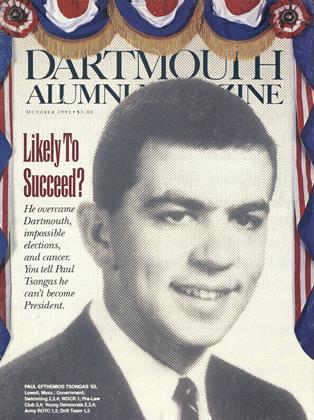Naguib Mahfouz, Fountain and Tomb (Three Continents Press, 1988) Finely crafted sketches and anecdotes built around a traditional, but changing, quarter of Cairo. In my opinion the best translation of any work by Mahfouz to date. Palace Walk (Doubleday, 1990) The first volume of Mahfouz's Cairo Trilogy, widely considered his crowning literary achievement, traces the history of modern Egypt through the history of an Egyptian family.
• Yusuf Idris, Rings of Burnished Brass (Heinemann, 1989)—Riveting short stories from the sixties, in the best translation of any of Idris's works. My students said they couldn't put it down.
• Ghassan Kanafani, Men in the Sun (Three Continents Press, 1978)—The short stories convey the desperation and paralysis of the Palestinian reality in the fifties and sixties. The writer's career was cut short at the age of 36, in an assassination attributed to the Israelis.
• Sahar Khalifeh, Wild Thorns (Olive Branch Press, 1989)—-An account of everyday life, survival, and resistance in the Israeli-occupied West Bank.
• Emile Habiby, The Secret Life ofSaeed:The Pessoptimist (Zed Books, 1985) This carnivalesque treatment of the Palestinian-Israeli conflict is a sophisticated portrayal of human survival of the absurd and the impossible.
• Etel Adnan, Sitt Marie Rose (Post-Apollo Press, 1982) Representative of the new Lebanese "women's war literature," this novel tells the story of a Christian woman who sympathizes with Palestinian Muslims in the civil war. The unconventional fragmented first-person narrative voice conveys both a sense of immediacy and disjointed chaos.
Hanan al-Shaykh, The Story of Zahra (Quartet Books, 1986) A young woman who was troubled and neurotic in Beirut in the best of times has to fend for herself as her war-torn world falls apart. Zahra's dysfunctionality becomes less conspicuous and actually helps her cope with an utterly abnormal reality.
• Elias Khoury, Little Mountain (University of Minnesota Press, 1989) This novel moves disjointedly from the narrator's childhood in pre-war Beirut through dislocations and schisms that have become salient metaphors in contemporary Lebanese writing.
• Ali Ghalem, A Wife for My Son (Africa World Press, 1984)—Set in contemporary Algeria and originally written in French, this novel about a young woman forced into a traditional marriage gives a realistic account of the limits of social norms and the possibilities for challenging them.
• Tahar Ben Jalloun, A Silent Day inTangier (Harcourt Brace Jovanovich, 1989) In this Moroccan Francophone work a man approaching death reflects upon significant moments in his life.
• Tayyib Salih, Season of Migration tothe North (Three Continents, 1978) The disturbing story of a young Sudanese man who migrates to England and subverts the model of British success at "civilizing savages."
• Abdelrahman Munif, Cities of Salt (Vintage International, 1987) Banned in several Arab countries, this novel portrays the rapid change that a Saudi Arabian oasis town experiences with the discovery of oil. The economic colonization of these resources by American companies and individual entrepreneurs is pointedly depicted.
• Abu Bakh Bagader and Ava Molnar Heinrichsdorff, editors, The Assassination of Light: Modern Saudi Short Stories (Three Continents, 1990)—This first English collection of modern Saudi Arabian stories provides insight into a society whose private sentiments and concerns are not often made public.
 View Full Issue
View Full Issue
More From This Issue
-
 Feature
FeatureMENCKEN UNBOXED
October 1991 By ROBERT SULLIVAN '75 -
 Feature
FeatureHONEST TO GOD ACCOMMODATION
October 1991 By JAMES O. FREEDMAN -
 Feature
FeatureRUNNING ON IDEAS
October 1991 By Charles Wheelan ’88 -
 Feature
FeatureThe Masked Stork
October 1991 By William DeJong '73 -
 Feature
Feature"Like Walking Along an Arrete."
October 1991 By Heather Killebrew '89 -
 Article
ArticleDR. WHEELOCK'S JOURNAL
October 1991 By E. Wheelock
Article
-
 Article
ArticleLecturers
FEBRUARY 1929 -
 Article
ArticleNew President of Skidmore College
JUNE 1965 -
 Article
ArticleGalloping Gardner
March 1976 -
 Article
ArticleIntroducing the New Football Coaches
March 1934 By Edwin B. Dooley '26 -
 Article
ArticleNon-Graduate Loyalty
October 1942 By P. S. M -
 Article
ArticleAbout Twenty-Five Years Ago
December 1935 By Warde Wilkins '13

